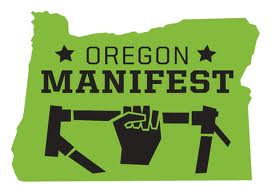Saturday, April 9
People often ask, “So do you make commuter bikes too?” Of course I do. Every Littleford bike is a good commuter- for somebody. My question is “What kind of commute do you have in mind?” I ask this because it isn’t so much the “use label” of a bike that makes it good for this or that. One doesn’t need a commuter instead of a touring bike or vise-versa. It’s a broader question of utility. How much does your bike need to do? A good, practical bike is built to do its job comfortably and efficiently. The harder the job a bike is designed to do, the less efficiently a lesser job is done. (Consider that a V8-powered ’85 Chevy Suburban gets 12 miles per gallon whether it’s hauling a load of groceries or hauling a 26 foot boat, but a 52 horsepower Geo Metro gets 48 MPG on the highway, though it’s running at 70% of its maximum horsepower just to maintain 65mph.)
On a much smaller scale, the crucial attribute that similarly suited touring and commuter bikes share is cargo capacity. Since the same array of rack and bag options apply to both uses, the type of cargo is irrelevant. More important is the amount of goods that needs to be hauled. A week’s groceries and a portable living situation tend to weigh about same. Likewise, a simple handlebar bag may work as well to haul a change of work clothes as it will on a randonee. A good heavy hauler, whatever the load, has a rigid and durable frame that handles smoothly when loaded, and sturdy steel tubing that can take years of abuse, be it from sign posts and u-locks or baggage handlers and errant rocks.
It is also important that a utility bike, whether for local transit or longer journeys, is comfortable. Any good touring bike has that comfort built in…for eight to twelve (or more!) hours of riding a day, it’s imperative. And while an imperfect fit or inappropriate ride posture on a daily thirty minute ride may be a temporary annoyance in the short term, just like on tour the discomfort of even a short ride to work can quickly become a much dreaded and mood-spoiling pain in the tush as the work week progresses. Even a bike that fits perfectly won’t be comfortable if it puts its rider in an unsustainable position. An intense training century ride on a pedigreed racing bike might be just fine for a fast line to the finish– but that forward leaning, hand-heavy geometry is purely athletic, and comes up short at the more leisurely pace of everyday life.
The most valuable asset of any bike, touring, commuting, or otherwise, is it’s extraordinary efficiency. Bikes are the single most efficient mode of human powered transport. The energy required to maintain a casual stride walking can propel a rider at 10 to 15 mph over flat ground on a bike. But, as efficiency increases incrementally toward 100% at the highest performance levels, the capacity to haul anything uphill but its hard working human engine quickly drops off. In the more practical applications of touring and commuting climbing speed steadily drops as load is increased. At the farthest end of the spectrum, a heavy-duty “megabike” could be built to haul several hundred pounds, though for a single person to accelerate that much mass up even a slight hill would require gearing so low and make progress so slow that a simple push cart might do a better job. My task as a frame builder is to find the place within this continuum, between race bike and mega bike, that will most perfectly match its rider’s needs. No surprise that the first and most important question I ask a new customer, is “What does your bike need to do?”
When Jocelyn Sycip of Oregon Manifest asked if I’d be interested in entering a bike for this year’s Constructor Challenge, I didn’t hesitate to get on board. As a rigorous contest of ingenuity, usefulness and durability, the challenge is a perfect platform for my practical approach to bicycles. (I think the very existence of an event like Oregon Manifest reflects a larger shift to self-sustainability in our society. It is a re-emergence of the very big question, the original quandary that challenged humanity before the cheap thrill of fossil fuel taught us to answer…”How can I do that?” with “By turning this on.”)
I’m excited to be partnering up for the challenge with local utilitarian tailor Troy Cameron of Philosophy Bags and designer/photographer Aaron Kaffen of Kaffenated Designs. Over the coming months we’ll be putting our heads together to find that sweet spot on the continuum; and to build and outfit a durable metropolitan workhorse that is comfortable, beautiful, and most importantly, really and truly useful.
You can help the cause. Leave me comments with your bike commuting wants, needs, perks and peeves. What do you wish your bike had? What do you wish it would or wouldn’t do? We just might be able to make your suggestions a reality!

